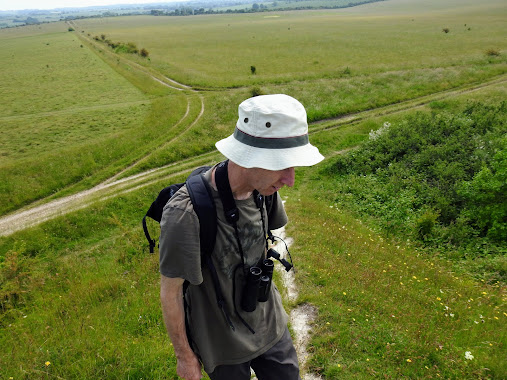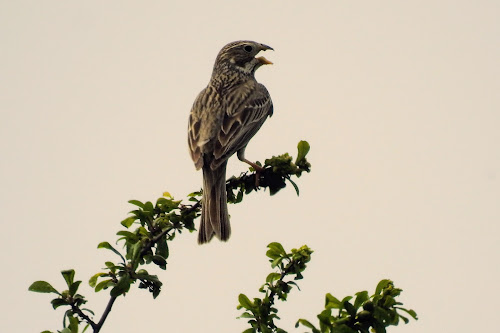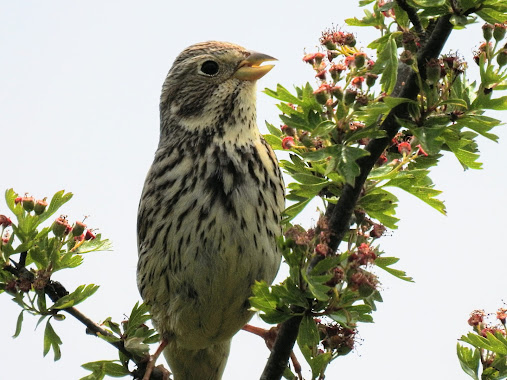Saturday 10th June 2023.
A much better return of moths this morning than of late that included 7 new moths for the year, a Harlequin Ladybird and a Marmalade Hoverfly within the moth box! A total 54 Moths of 24 species were recorded and after the very warm evening we had last night, I was hoping for a good array of moths and was dutifully rewarded.
A dark form of Marbled Minor was sitting on the wall near the box with two Willow Beauties nearby and on one of the kitchen windows, my first Green Oak Tortrix of the year was sitting. In fact, a further 3 more were within the moth box; the most I have ever had in one morning here in my garden. An L-album Wainscot and several species of micro moth were also new for the year that included a Bud Moth, Eudonia mercurella, Garden Grass-Veneer and Swammerdamia pyrella while a few immigrant moths that included 2 Diamond-back Moths, 2 White-points and a Silver Y was nothing to be scoffed at. The most numerous moth were the Heart & Darts with at least 7 recorded this morning. I shall probably put the moth box on again tonight seeing it is still quite warm today.
Moths present this morning included the following:
- 4 Willow Beauty
- 3 Marbled Minor (NFY)
- 7 Heart & Dart
- 2 White-point
- 2 Vine’s Rustic
- 1 L-album Wainscot (NFY)
- 2 Garden Carpet
- 1 Cabbage Moth
- 1 Pale Mottled Willow
- 1 Silver Y
- 2 White Ermine
- 1 Green Pug
- 5 Green Oak Tortrix (NFY)
- 4 Light Brown Apple Moth
- 1 Bryotropha affinis
- 1 Bud Moth (NFY)
- 1 Ephestia woodiella
- 1 Eudonia mercurella (NFY)
- 3 Garden Grass-Veneer (NFY)
- 2 Diamond-back Moth
- 4 Apple Leaf Miner
- 2 Brown House Moth
- 2 Tachystola acroxantha
- 1 Swammerdamia pyrella (NFY)
- 1 Hawthorn Moth
- 1 Mompha subbistrigella
Meanwhile, back at Andy FIsher’s house, his moth box was also providing some nice moths that included the following:
- 1 Green Pug
- 1 Large Yellow Underwing
- 9 Heart & Dart
- 1 Heart & Club (NFY)
- 1 Setaceous Hebrew Character NFY)
- 1 Shuttle-shaped Dart
- 2 Common Marbled Carpet
- 1 Maiden’s Blush
- 1 Willow Beauty
- 1 Setaceous Hebrew Character (NFY)
- 1 Shuttle-shaped Dart
- 2 Common Marbled Carpet
- 2 White-shouldered House Moth
- 2 Tachystola acroxantha
- 1 Garden Grass Veneer
- 2 Light Brown Apple Moth
- 1 Meal Moth (NFY)
- 1 Eudonia angustea
- 1 Green Oak Tortrix
Again, a reasonable haul of moths within Andy’s garden with at least 31 moths of 19 species recorded including my first Heart & Club, Setaceous Hebrew Character and Meal Moth of the year. A Maiden’s Blush perched on top of the moth box and up to 9 Heart & Dart was impressive too.
Now, our destination today was to be Martin Down, on the Hampshire / Dorset border where we were hoping that a good selection of moths, butterflies, birds and plants would be on view and thankfully for us, we had a cracking day here. Birding pal, Geoff Farwell, joined us again and proved very useful in identifying a lot of the plants on show, being an experienced botanist as well as a birder. Andy was his usual crazy self and what with the heat itself, it really did test our resolve as we covered quite a few miles walking around the 350 hectare site.
Yes, the weather was very kind to us, for with the threat of possible thunderstorms today and stifling heat at times, I had thankfully brought plenty of water along with me and also lunch from an early morning visit to the local shops. We arrived around 9am at the site and almost immediately, got stuck into the Common Whitethroats displaying in the car parks and also the plants and insects here too. A probable Summer Chafer beetle flew over and Geoff was pointing out a common plant here - Dropworts. They were growing quite tall here but the area isn't grazed by the sheep whereas out on the Downs itself, they are rather short.
By the car park, up to 4 Lesser Whitethroats were seen earlier this year, but we saw or heard none today; nor did we see either Turtle Dove and Marsh Fritillaries today, but despite that disappointment, we saw so much today that I put that thought right at the back of my mind. There were several people already here that included many Botanists, Butterfly enthusiasts and even a few people out on a walk with their dogs; but best of all, they all behaved themselves and to be honest, to be in a place with so much wildlife, was simply magic. I even said to Geoff that it was like one of those ‘Mindful moments’ that Springwatch has been showing for 90 seconds, but this was for how long you wanted it. Amazing.
Of course, I took lots of photos and so I shall probably let the photos do the talking this time. But first, I shall quickly write about the birds seen. Starting with raptors, a Hobby was seen by just me, which flew into a small group of trees. We were sat on top of the old Firing range hills overlooking the brambles and fields towards the north Car Park. I spotted it flying low over the fields, coming from the south and landed quickly within the trees and out of view. Fortunately for the other two guys, we saw another one flying near the Service Station in Fordingbridge on the way back home. Red Kites were also in good numbers, though Common Buzzards were in short supply, with just the one seen all day.
Both Corn Buntings and Yellowhammers were in very good numbers and both species were showing extremely well at times along the footpaths. Skylarks were simply everywhere and while we sat down and took a refreshment break, all you could hear were Skylarks singing close by. No cars, no planes and barking dogs; just the beautiful song of the Skylark. Breathtaking. Several pairs of Stonechats were seen on our walk around the reserve including one male bird that looked a little odd. Judge for yourself on the photos, but the large white rump and large white markings on the secondaries had me scratching my head. After studying the photos later, I concluded that the bird looked good for a 'Continental' Stonechat. I saw at least three Grey Partridges today, though the sightings were very brief as they flew off as quickly as they were found. A good addition to our day list though was a female Bullfinch seen near the old Firing Range and also good numbers of Linnets were seen throughout our day here.
Another good find was a singing male Tree Pipit in the northern end of the Reserve, the first of this species I have ever seen here. Even a Willow Warbler was found nearby; a species that seems to be declining rapidly here in the south, singing on top of bushes with a Chiffchaff also seen here. A good variety of birds here, especially the Corn Buntings where sightings of this lovely bird easily must have been in double figures. a Cuckoo was heard calling somewhere in the distance, but we never got a glimpse of the bird.
And now to Moths and Butterflies. Regarding the moths, I actually got a ‘Lifer’ today. It came in the form of our first ever Forester Moth, which is a beautiful shimmering green micro moth that we found near the Firing Range area. Other moths included many Satin Grass-Veneer, Cinnabar Moth, Six-spotted Burnet Moth and also Common Heath. Up to 10 species of Butterfly were seen that included good numbers of Adonis Blue, Small Blue and Common Blue, but also Grizzled Skipper, Small Heath and Brimstone.
As mentioned earlier, the plants were abundant and varied and with Geoff’s expertise, we got to see the likes of Rough Hawkbit, Yellow Rattle, Fairy Flax, Mouse-eared Hawkweed, Rock Rose and Gromwell. This place is famous for its Orchids and today, we had four species under our belt that included Common Spotted Orchid, Fragrant Orchid, Pyramidal Orchid and best of all, when we eventually found them, a good number of Butterfly Orchids. Simply wow! I have not seen this species for around 20+ years and we found loads of them. Not only the flowers, but also the different grasses that were on show as Geoff started revealing their names and also why they are growing here. One species, notably, Upright Brome, was becoming an invasive species due to the pesticides running down from the neighbouring fields. We did see a tractor spraying insecticides over the field, which most certainly displeased Geoff. Other Grass species seen included Crested Hairgrass and Hairy Tare, while some of the large bushes present included Small-flowered Sweet Briar and Dog Rose. There were a lot more plants on show including Meadow Buttercup, Greater Knapweed and others, as Geoff pointed out many more on our lovely walk here.
Sweating buckets, it was bittersweet in getting back into the car to enjoy the comforts of Air Conditioning, but leaving this amazing place was a bitter pill to swallow. I would love to do a late evening visit here, but it is a long distance away from my house. Maybe one day.
Update: I just identified a micro moth that we found today at Martin Down and discovered it was a 'lifer'. A Twin-barred Knot-horn (Homoeosoma sinuella) was flying about in the tall grass and I managed to pot it and take a few photos of the said moth.












































No comments:
Post a Comment